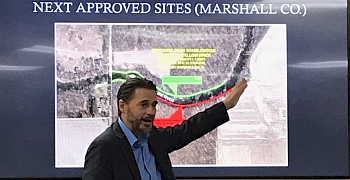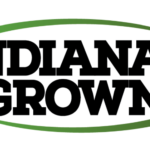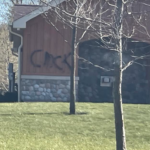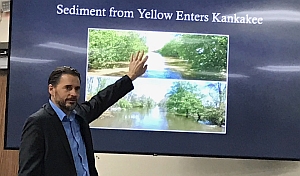 Scott Pelath, the Executive Director of the Kankakee River Basin and Yellow River Basin Development Commission held a public information meeting in the commissioner’s meeting room of the County Building Wednesday afternoon.
Scott Pelath, the Executive Director of the Kankakee River Basin and Yellow River Basin Development Commission held a public information meeting in the commissioner’s meeting room of the County Building Wednesday afternoon.
His presentation included looking at the history of the basin, reviewing the current conditions of both the Kankakee and Yellow Rivers, the issues that need to be addressed and a 40 year work plan. Pelath said he wanted to come straight out to the people and explain what they are working on, what they intend to do and receive some feedback from the public.
There are 8 counties that constitute the Kankakee River basin: Lake, Newton, Porter, Jasper, LaPorte, Starke, Saint Joseph and Marshall. This new commission was established in July of this year and changed the board from 24 members down to 9 with 2 additional non-voting representatives from Illinois.
Some basic facts, the Kankakee River runs for 133 miles and begins in St. Joseph County and ends at the Illinois River. The Yellow River is the major tributary in Indiana. The basin covers 1.3 million acres in Indiana and 1.1 million acres are crops.
Once dubbed the “Everglades of the North” this was once the second largest fresh water marsh in the United States second only to the everglades in Florida. Beginning in the 1880’s and ending about WWI folks decided if they would use drainage techniques they could farm the land.
One of the dilemmas we have is that the areas still wants to act as a marsh and we are putting more water into the system than ever before. This water allows more sand and sediment to flow down the river. The flood of 2018 showed an all-time record water level at 2 points of the Kankakee since 1923.
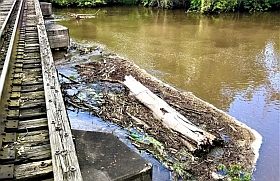 Some of the issues are bank failures, log jams, sand bars and substantial man-made barriers.
Some of the issues are bank failures, log jams, sand bars and substantial man-made barriers.
State legislatures created this new commission and created a way to fund improvement projects. They estimated a $3 million dollar a year revenue from taxes on the properties in the basin. The additional tax was set at $1 per farm acre, $7 per residential lot, $50 per commercial property and $360 for each utility and industrial parcel.
These new assessments are set to go into place by law on the May 2021 tax bills. There are options on how the monies can be paid and each county will make their own determination. It can be paid solely by the property owners, paid solely by the county with other funds they may have, it could be shared between property owners and the county or could adopt a higher fee schedule if they choose.
The powers this new commission has includes: bank stabilization, reconstructing channels, acquire land for flood storage, construct levies, remove sediment and sand traps, remove trees and construct access roads.
The long term goals are reducing sediment entering the river system, stabilizing river banks, creating more storage for greater volumes of water, protect vital economic assets and reduce human-man-made barriers.
The 40 year plan details plans to stabilize banks, remove logs, remove man-made structures and more.






